(Last updated August 2024)
Whether at the Burning Man event in Black Rock City, or at Regional Events around the world, Burners pride themselves in devising better, more efficient ways to do things. We’ve been building our ephemeral home in Black Rock City since 1990; all along participants have been imagining and experimenting with technology that conserves water, minimizes waste and utilizes renewable energy sources. As with all things Burning Man, these learnings come back to our lives, and impact the greater world in which we all live.
The nonprofit Burning Man Project and the global Burning Man community are working to make the Burning Man event in Black Rock City more ecologically sustainable. This sustainability web page summarizes our efforts. To get involved and stay informed, go here.
You can watch our 2024 Sustainability Report: Year Five Update from July 2024 to see some of the projects and people leading our sustainability efforts:
TABLE OF CONTENTS
- Environmental Sustainability Roadmap
- No Matter Out of Place
- Be Regenerative
- Be Carbon Negative
- Breaking Down the Roadmap’s Goals
- “Going Solar” video by Profiles in Dust
- Community-led Sustainability Projects
- Sustainability Initiatives in BRC 2022
- Event Infrastructure
- Community
- Administration
- International Wood Society’s BRC 2022 documentary: “Tales of Dreamers”
- Black Rock City in 2023
- 2023 Sustainability Report: Year Four Update
- Climate Change Adaptation
- Global Year-round Culture & Community
- Sustainable Art
- The Green Corridor
- How to Get Involved
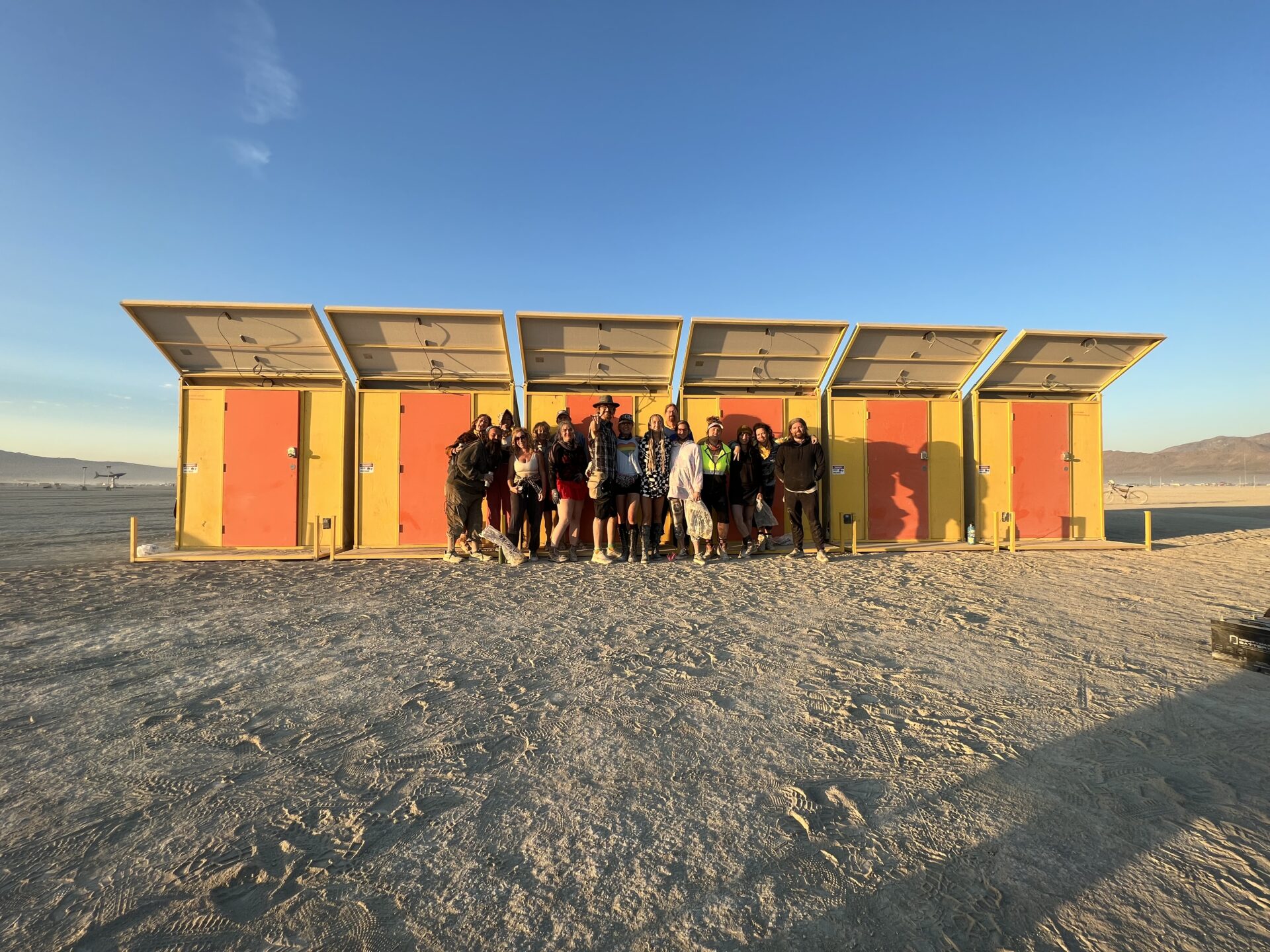
Environmental Sustainability Roadmap
First, please read our Environmental Sustainability Roadmap. It outlines three important goals we wish to attain by 2030:
- No Matter Out of Place. Handle waste ecologically.
- Be Regenerative. Create a net positive ecological and environmental impact.
- Be Carbon Negative. Remove more carbon from the environment than we put into it.
These goals are in line with what we all need to do to ensure that Earth is a viable ecosystem. We believe that the global Burning Man community has a pivotal role to play. Like the communal effort model of Black Rock City itself, achieving these goals will require collaboration between all of us — Burners around the world, Burning Man Project, and Black Rock City participants.
The 2030 Roadmap is ambitious, and we’re doing real work to get there. To follow our progress year over year, see our progress update from 2021, and the update from 2022. In the Burning Man Journal, Sustainability Efforts on the Road to Black Rock City summarizes much of our work from spring 2022. One of our Ecosystem Activation calls brought together leaders, scientists and organizations to galvanize the community towards carbon dioxide removal and our carbon negative goal (our emissions inventory is also in that video). Our climate change adaptation memo summarizes the direct impact our staff and community are having on the future of Black Rock City.
Let’s break down the Roadmap’s three goals a bit further:
1. Handle Waste Ecologically
Prior and existing projects such as Dominic Tinio’s (aka DA) 85 mile eight day MOOPATHON walk, the Camp IDEATE’s compost program, and the Gerlach recycling and compost project can scale to ensure we handle all waste ecologically. In Northern Nevada, we have made the Gerlach recycling and compost program year round. Our organization and participants are working on ways to manage and reduce waste during and after the event. Our waste characterization study is helping us create data-driven initiatives to divert materials away from landfills.
2. Be Regenerative
The path toward making our city and culture ecologically regenerative is clear: focus on the permaculture, sustainability summits and ecosystem restorations being done by Burners Without Borders (BWB), and do similar work in our daily lives. The submissions to the Fly Ranch LAGI 2020 design challenge demonstrate that the ideas and infrastructure needed to solve the climate crisis are within reach.
3. Be Carbon Negative
As we wrote in the Roadmap, the most impactful changes we can make to reduce carbon come from producing our own power using renewable energy, ending the use of fossil fuels, and participating in an offset program that sequesters atmospheric carbon. Together, these changes will allow us to move from being carbon positive to becoming carbon neutral, with the end goal of becoming carbon negative. Organizations such as Climeworks and Project Vesta can offset emissions as we migrate off fossil fuels and develop carbon dioxide removal methods. Looking to the future, we aim to drawdown at least 54,000 metric tons of CO2 — the same amount that we calculated in our emissions inventory that we release in Black Rock City in a typical year.
Burning Man Project aspires to power the infrastructure and art of Black Rock City via renewable energy by 2030. Organizations, camps, and artists are heeding this call, engaging Black Rock City and neighboring communities as a testing-ground to research and develop ways to harness and utilize solar power, not only during the annual event on playa, but throughout the rest of the year.
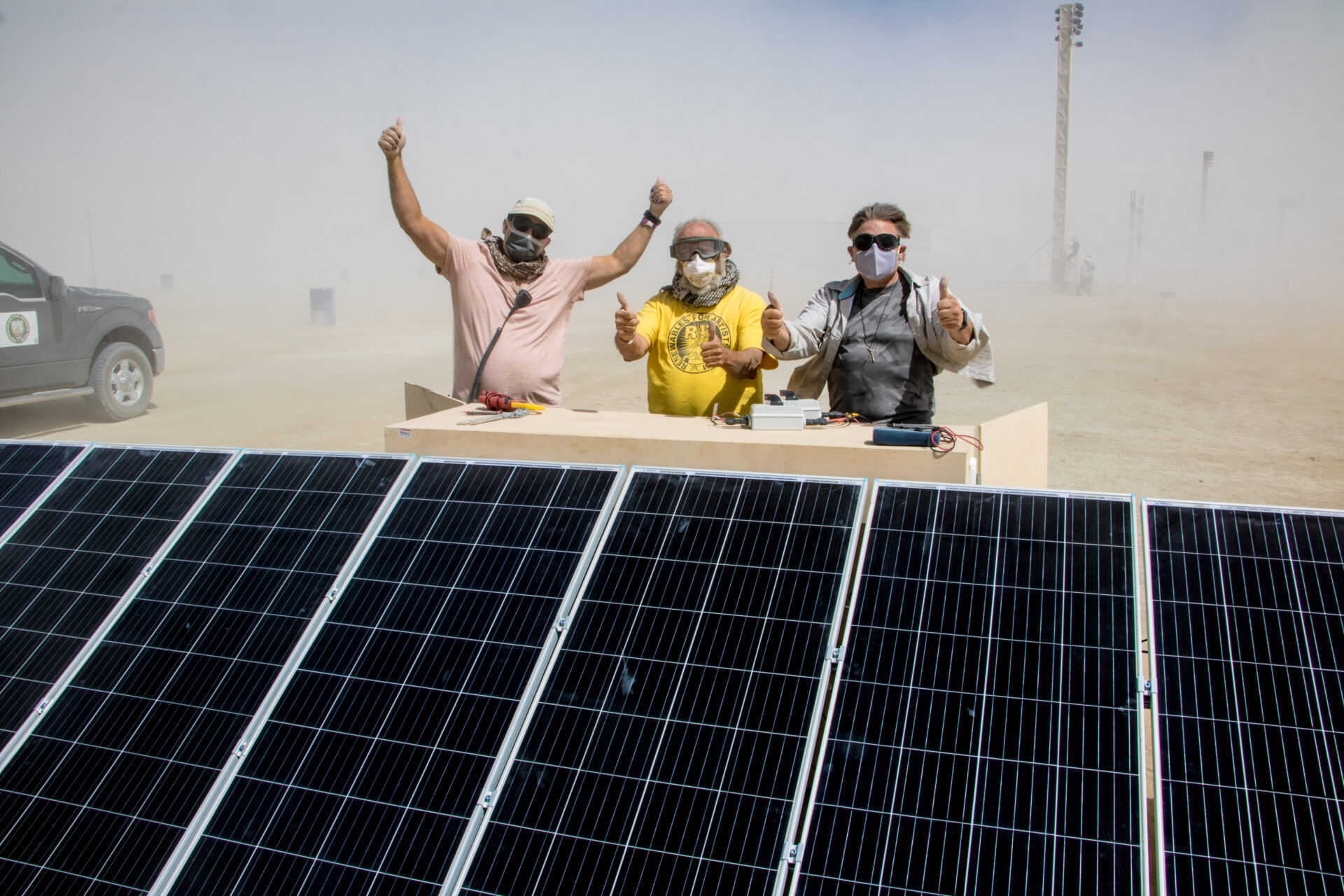
Community-led Sustainability Projects
We’ve embraced and are learning from some important projects led by engaged Burners in the community; these include: DragonWings, Paradisium, Hotel California, Solarpunks and The Solar Library. Within Black Rock City and the broader Burning Man community, we’re supporting new teams that facilitate knowledge sharing; these include Renewables for Artists Team (RAT), the Green Theme Camp Community, and Burner Leadership Achieving Sustainable Theme Camps (BLAST). Burners Without Borders and Fly Ranch have hosted sustainability and regenerative culture-themed gatherings, and a Green Theme Camp Summit (which launched a group that continues to meet, host calls, and develop community sustainability initiatives).
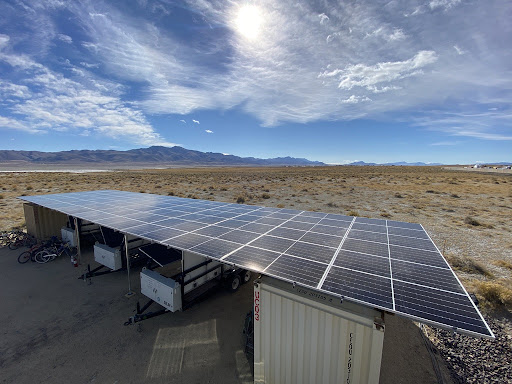
Sustainability Initiatives in Black Rock City in 2022
In Black Rock City 2022, the following projects and initiatives contributed to meeting the goals of our 2030 Roadmap:
Event Infrastructure
- The Man and Man Pavilion were entirely powered by a 34kW / 124kWh portable solar plus energy storage prototype (the “Unicorn”) designed and built by Burning Man Project.
- Two new portable solar pop-up prototypes were deployed and tested in BRC and on our Northern Nevada properties; these prototypes laid a foundation for expanded implementation in Black Rock City and beyond.
- In Gerlach, Burning Man Project installed a 30kW solar system and took a staff support and services facility entirely off fossil fuels.
- Black Rock City’s Department of Public Works (DPW) Power team tested a hybrid generator battery on one of our staff grid circuits, reducing the run time of the diesel generator and resulting in a 65% reduction in fuel use.
- The Off Fossil Fuels (OFF) program tested the workability and performance of 1,000 gallons of a high-performance renewable diesel in generators, mutant vehicles, light towers, and fleet vehicles, and conducted studies on relative pollutive emissions versus traditional diesel.
- Forty of our diesel-powered light towers were replaced with solar-powered towers.
- 56 two-seat Ecozoic composting toilets (a total of 112 seats) were deployed in outer playa and other locations in BRC.
Community
- 590 placed theme camps (more than 50% of all placed camps) expressed clear commitments to working towards the goals of the 2030 Sustainability Roadmap.
- We introduced Humans United for Better Sustainability (HUBS) to help camps share resources such as water, water disposal and power.
- Only four percent of Black Rock City art is burned each year. The playa’s biggest 2022 Honoraria piece, “Paradisium” by Dave Keane & Folly Builders, was not burned; it was dismantled and will be reinstalled in various locations.
- 730 camps used solar power.
- More than 40 mutant vehicles were electric or human powered.
- 36% of art funded through Honoraria grants had a focus on sustainability.
- 42 mobile solar and battery trailers (“Baby Wookies”) supported the build of BRC and powered more than 32 locations and art projects.
Administration
- Our sustainability focused calls in the past three years have generated a total of 50K unique views on Facebook Live, with thousands of views on social media and hundreds of people on each virtual call.
- After research and analysis, we recommended two carbon dioxide removal projects.
- Burners Without Borders gave out 12 microgrants to projects that addressed sustainability.
Black Rock City in 2023
Here are a few examples of some important initiatives we are working to implement for Black Rock City 2023:
- As it was in 2022, the Man will be 100% powered by solar and/or renewables in 2023 and beyond.
- The DPW Power team will expand its implementation and testing of battery coupled generators on Black Rock City’s internal grid, further reducing our fossil fuel needs.
- The Fuel team will continue to expand the amount of diesel fuel replacement, with a current focus on high-performance renewable diesel (HPR).
- The solar team will upgrade a portion of our small solar generators, improving the utility of these assets to support a cleaner Black Rock City build cycle.
- The solar team will design and test two or three new mobile container-based prototypes, expanding our fleet of solar resources.
- The power team will increase use of renewably-powered infrastructure, including an expansion of the solar-powered light towers and utilizing LEDs and solar-powered lighting wherever feasible and safe.
- We will continue to develop ecological and regenerative programming and stewardship at Fly Ranch, our 3,800 acre property adjacent to the Black Rock Desert.
- More than two dozen artists are working with the Renewables for Artists Team (RAT) to power their playa art projects sustainably.
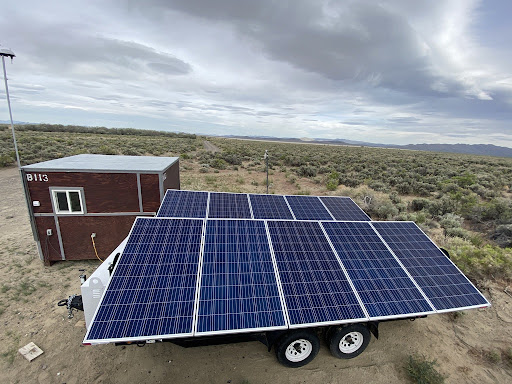
Climate Change Adaptation
People have raised questions about the long-term viability of Black Rock City in the face of a changing climate and warming planet. To learn more, you can read “Climate Change Is an Existential Threat to Black Rock City.” Matt Sundquist, who is the Director of Fly Ranch, posted this article on our participant forum for Burning Man on Medium. The article explains, among other things, why shifting the event to a different time of year (a common suggestion) isn’t an option.
Black Rock City camps, crews and artists are continually learning and sharing technologies and resources (for example, the Solar 101 training by the Renewables for Artists Team) with one another. We continue to implement and support internal programs that bolster their efforts, including facilitating a process for camps to connect with each other and form resource-sharing hubs as part of a Communal Effort to meet our goal of becoming carbon negative by 2030.
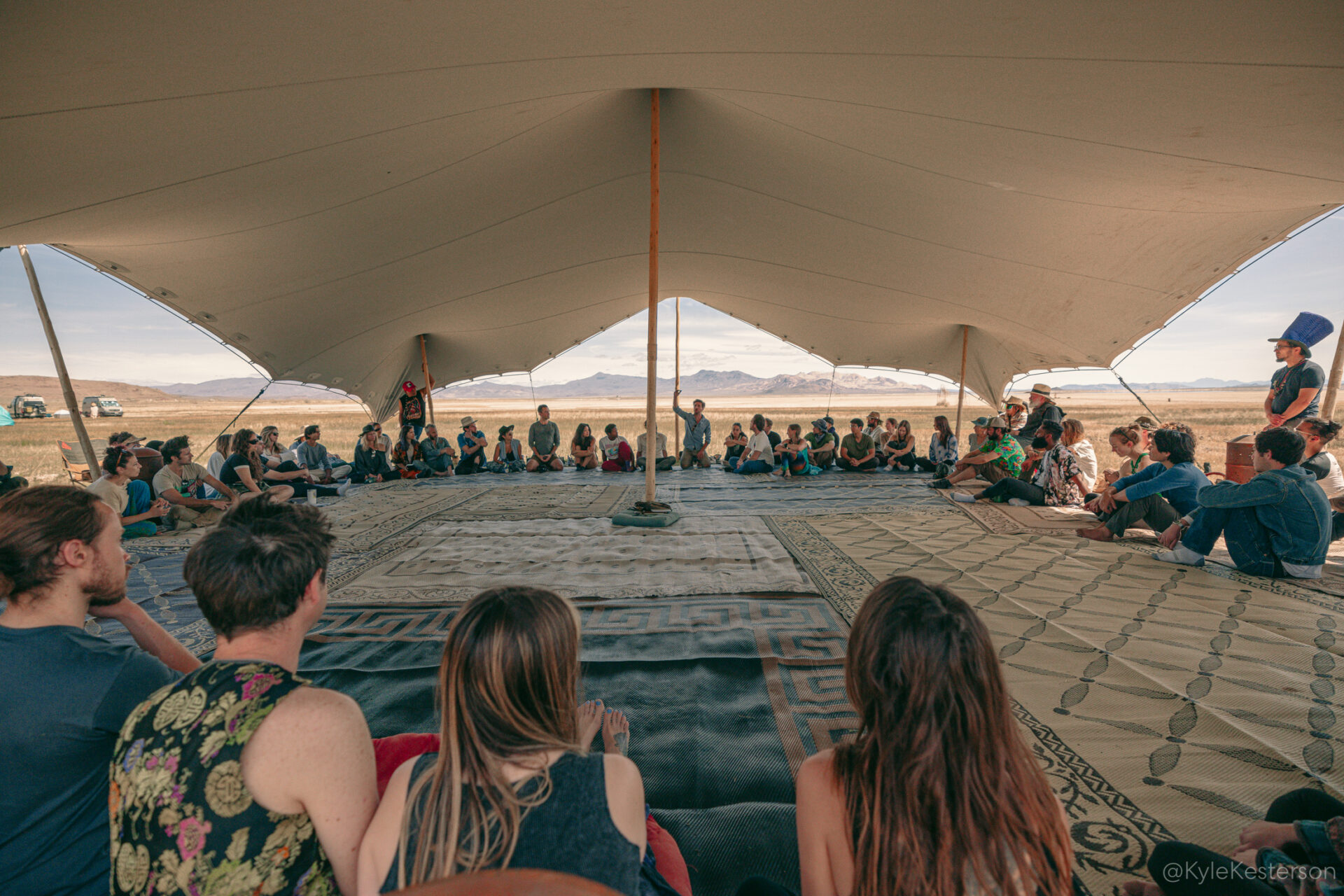
Global, Year-round Culture & Community
Finally, it’s important to note that Burning Man goes well beyond Black Rock City, the annual event in the Black Rock Desert. Burning Man is a global, year-round culture and community that creates more than 100 Regional Events, and countless other offshoots and unofficial gatherings inspired by the 10 Principles.
The climate-related issues we face in Northern Nevada are radically different from those experienced by Regional Burning Man Events and communities in Australia, Argentina, Japan, Florida or Alberta. The lessons we learn and the experiments we try in Black Rock City may be helpful in other places, or they may not.
We hope Burners around the world step up and help right the ship so Burning Man culture, humanity, and life on Earth can thrive into the future. Burning Man Project does not believe it is our responsibility to decide for the individual which tools and positions they should put into practice to manage their impact on the planet. We will do our part to facilitate and educate the global Burning Man community and beyond, so we can all understand the big picture more clearly. Our job is to nurture Burning Man culture and do it well in the face of many ongoing and relentless challenges to our survival — both in the world at large and in the home of Burning Man in Northern Nevada.
Sustainable Art
Read more about sustainable art over on the Burning Man Journal:
- “’Liquid Forest’ Illuminates the Plastic Waste Problem”
- “Small-scale, Sustainable Mutant Vehicle Creates Big Playa Magic”
- “Creating ‘Sanctuaria’ ~ An Interview with Regenerative Artist Cecilia Pagkalinawan”
- “Dave Keane & Folly Builders’ Next Act: ‘Paradisium,’ a Sustainably-built Forest”
- “The Radical Reciprocity of Art for Trees”
- “How the Temple Builders Guild Was Built”
- “Arthur Mamou-Mani’s ‘Catharsis’: How VR Is Paving the Way for Radical Inclusion and Sustainability”
- “’The Tinkle Drum’: The Sweet Melody of People-powered Art“
- “Waking Dreams: Evoking Greener Burns”
- “’The Solar Shrine’ Creator — An Interview with Honoraria Recipient Antwane Lee“
How to Get Involved
Contact us at sustainability@burningman.org or sign up for the sustainability newsletter for updates and events. To support our sustainability efforts, visit donate.burningman.org or email giving@burningman.org to learn more. Check out our 2020 update, 2021 update, 2022 update, and sustainability community calls.

